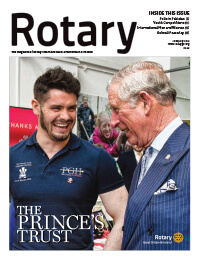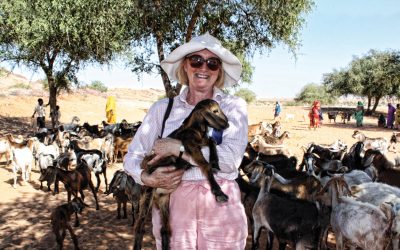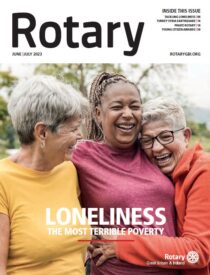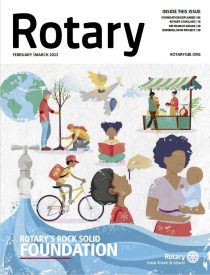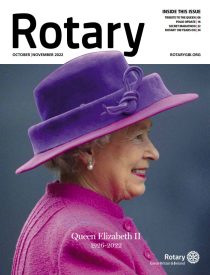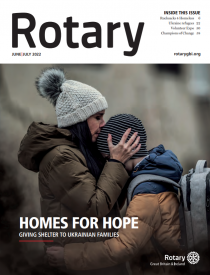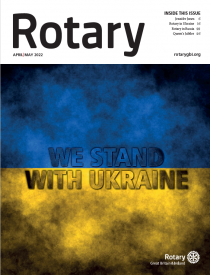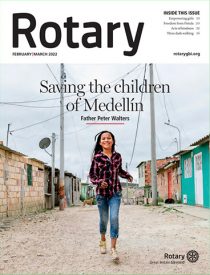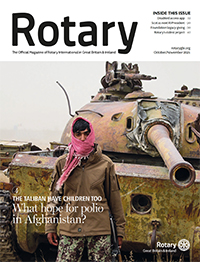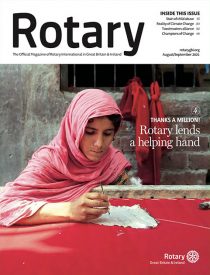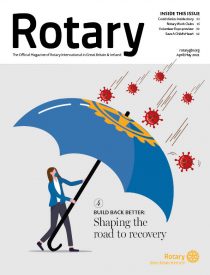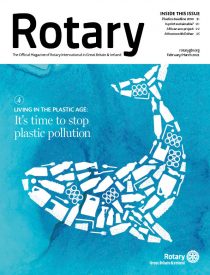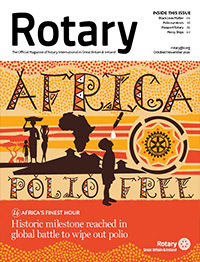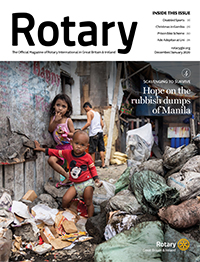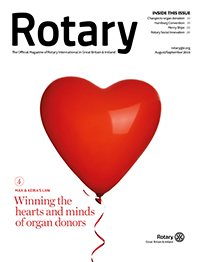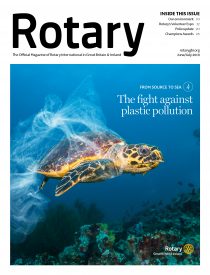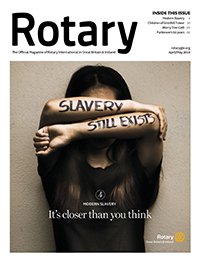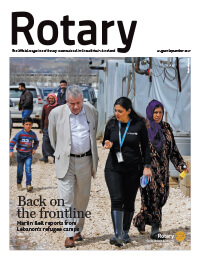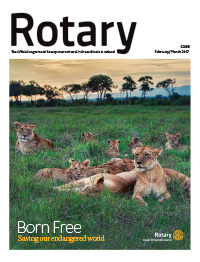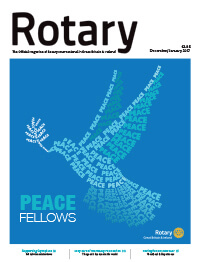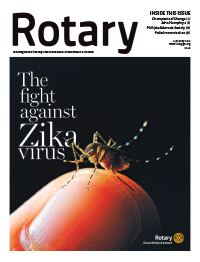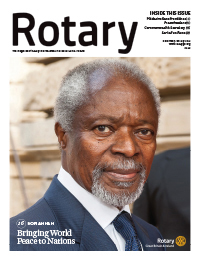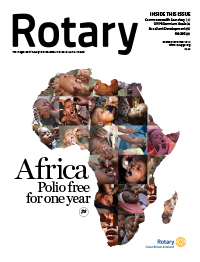Rotary International along with the World Health Organisation (WHO), Centers for Disease Control and Prevention (CDC), United Nations Children’s Education Fund (UNICEF) and The Bill and Melinda Gates Foundation have been fighting the polio virus for over three decades and have made great strides.
There are only two endemic countries left in the world, Pakistan and Afghanistan, and eradicating this terrible disease in these countries is proving a challenge.
I spoke with Jalpa Ratner the Deputy Chief of the UNICEF polio team in Pakistan to get a first hand appraisal of how things were progressing.
I started by asking for an overview of the present situation and was told, “Thanks to substantial recent progress, the world has never been in a better position to eradicate polio. During the first quarter of 2016, eight polio cases were recorded in eight districts, a 65% reduction year on year.”
“Also, the proportion of positive samples has further reduced to 13%. These outcomes have been achieved through a continued strengthening of operational performance evidenced by missed children, although that has reduced to fewer than 3% in the January and March national campaigns.”
“Whilst these are encouraging developments, the programme remains focused on finishing the job to ensure zero cases, zero positive samples and zero missed children.”
Although the number of reported cases has dropped dramatically in the first few months of this year there are some still big challenges ahead to reduce even further the number of cases to zero, so we went on to discuss this.
Jalpa replied, “The virus remains active in three remaining regions – the Khyber-Peshawar corridor, Karachi and the Quetta block.
“The programme has successfully been executing the low season strategy, which is the road map for stopping transmission.
The focus is on sustaining high-level performance across the country, with particular attention on high-risk areas; and improving community-based and environmental surveillance to make sure no virus is missed.
“Pakistan has the highest level of commitment from all levels of leadership.
At the Federal level, the programme is overseen by the Prime Minister’s Focal Point, Senator Ayesha Raza Farooq. In the provinces the Chief Secretaries are leading the way on polio eradication, while District Polio Eradication Committees (DPEC) are chaired by District Commissioners.
“The project is being managed by an experienced and dedicated network of Emergency Operation Centres, at National and Provincial levels. District Polio Control Rooms play a crucial role in coordinating operations during campaigns.”
“Under the National Emergency Action Plan (NEAP), high quality campaigns have been conducted each month until May, the end of the low season. If every child is vaccinated during every campaign, Pakistan can succeed in ending transmission of polio.”
I really wanted to get to the partnership that is the Global Polio Eradication Initiative (GPEI) of which Rotary International is a participant, alongside UNICEF, and I asked about the part they play in the programme.
The programme remains focused on finishing the job to ensure zero cases, zero positive samples and zero missed children.”
Ms Ratner replied, “Significant progress has been made in the 2015/2016 low season to track the virus in the remaining reservoirs and to find and vaccinate every child under five, with particular focus on missed children.”
“The programme consists of an aggressive and systematic campaign to reach all children, particularly those who have been continuously missed by vaccination.
“With this approach, driven by the National Emergency Action Plan (NEAP) and implemented by a committed network of Emergency Operation Centres, supported by the GPEI partnership – Pakistan is building its strongest ever defence against polio with stronger surveillance, fewer unvaccinated children and fewer strains of the virus.”
We then went on to talk about something called ‘The Switch’, which I understood was from the trivalent to the bivalent vaccine, “The switch requires immense coordination at global, country and local levels and is being implemented in a synchronised manner by thousands of health workers across the globe.”
“In Pakistan the Health Department implemented the global switch from Trivalent Oral Polio Vaccine (tOPV) to Bivalent Oral Polio Vaccine (bOPV) on April 25th,” Jalpa told me.
There is also a switch being carried out from the oral to injected vaccine, which is much more effective and I asked Jalpa to explain this for me, to which she replied, “Pakistan is the second polio-endemic country to introduce the inactivated polio vaccine into the country’s routine immunisation schedule.
“While every country in the world is set to introduce inactivated polio virus (IPV), endemic countries will greatly benefit from the boost in immunity offered to children as new evidence has clearly demonstrated that adding one dose of IPV to OPV helps the fight to end transmission of the virus.
“To boost individual immunity of children in high risk districts of Sindh, Balochistan, Khyber Pakhtunkhwa (KPK) and some agencies of Federally Administered Tribal Areas (FATA), inactivated polio vaccine (IPV) has also been added to vaccination campaigns to ensure we sustain immunity in these areas.”
Since the most challenging areas had been mentioned by Jalpa I asked her to go into a little more detail about the problems and her reply was quite guarded, which I suppose in the circumstances is understandable, “Since late 2014, the polio programme in Pakistan has been able to vaccinate over half a million children who were previously unreached by vaccination teams. We are now reaching children all across Pakistan.”
“Innovative measures like Permanent Transit Points established at railway stations, toll plazas, bus routes in districts bordering Waziristan agencies and across the country are enabling vaccinators an opportunity to engage with parents during population movement, to advocate for vaccination using OPV.
“In some areas initiatives like Continuous Community Protected Vaccination (CCPV) have strengthened micro-planning and stabilised a local, overwhelmingly female workforce. This community-based workforce is now well motivated, trained and supervised, which is helping maintain access because they enjoy the trust of their communities.”
I am aware that the task of immunising the child population below the age of five was vast in Pakistan but I did not know the numbers so I asked. “Each National Immunisation Day 36 million children are vaccinated with a workforce of approximately 200,000,” Jalpa explained.
We also addressed the alarming situation with the security of health workers and the need for protection with armed officers alongside polio workers.
Jalpa commented, “The hard work of the front line workers is incredible and they should be celebrated for the work they do every day to reach children with the vaccine and other health services. Vaccinators continue to strongly support the programme and volunteer to participate in campaigns to meet the demand for the vaccine from parents.”
“The delivery of healthcare, including the polio eradication programme, is a critical humanitarian service. Provincial Governments and the Pakistan Army continue to prioritise the safety of health workers as they deliver life-saving vaccines to children.”
With the tally of cases so low we then moved on to the more positive aspect of this campaign, although Jalpa did qualify her reply with caution which I understood, “Supported by core polio partners, and led by the Government of Pakistan, the programme is closer than it’s ever been to reaching that target of zero cases.
“This is the opportunity for Pakistan to take the world over the finish line for polio, but we know that we have been close before – three times in the past ten years – and each time the virus survived because it found sufficient pockets of under-immunised children. This time, Pakistan is committing to nothing less than leaving no child unvaccinated and vulnerable to this crippling virus.”
I asked Jalpa what message she would want to give to Rotarians who have worked hard over the years to fund immunisation programmes and spent time administering the vaccine, “We know where the virus is today. It’s in North Sindh; in Karachi; in the Khyber-Peshawar corridor; and in the Quetta block. These are the final sanctuaries of the last surviving transmission chains of the poliovirus in Pakistan.
“Through the use of every potential tool including mass vaccination of children using a combined IPV/OPV strategy, we must drain the last reservoir pockets, we must maintain good performance; we must make every campaign count and use every opportunity to build on our experiences from lessons already learnt in this long fight.
“Any child left unvaccinated is a risk to all of us, because we are all connected and our communities are borderless. Each of us in our community has a role to play to support our health workers – and our children – succeed.”








